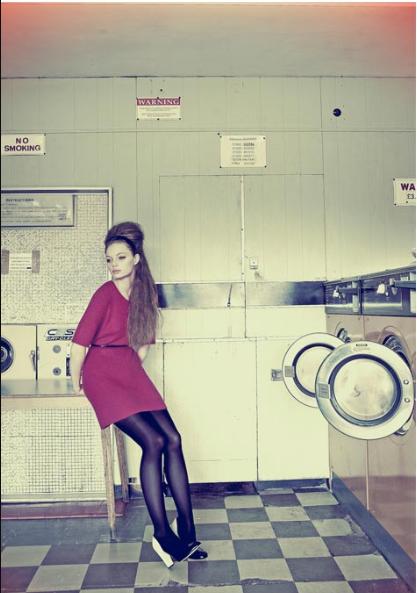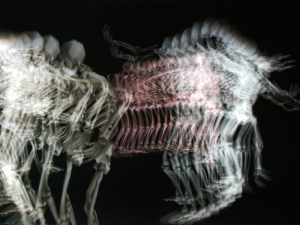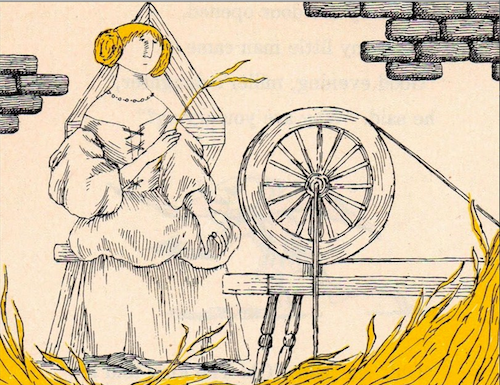


Reposted: my first Anthology submission (actually, I asked my former student if I could use it, and she said yes). Tori’s Canto 34 is the response to my assignment (set out below) to my freshman Western Heritage class at Carthage College in Kenosha, Wisconsin in the Spring of 2016.
[NOTE: the New Yorker cartoon below appeared several months after Tori composed her Canto.]
The Assignment
WRITE YOUR OWN INFERNO CANTO, WITH YOURSELF IN DANTE’S SHOES: AUTHOR, CHARACTER, HERO. DO WHAT DANTE DID. DRAW ON
- ‘THE REAL WORLD’ (PEOPLE, PLACES)
- PERSONAL EXPERIENCE: FAMILY, FRIENDS, GEOGRAPHIC LOCATION, KEY LIFE EVENTS. HOW ARE YOU LIKE DANTE?
- IMAGINATION
- PREVIOUS ‘ARTISTIC’ INFLUENCES—MOVIES, BOOKS, TV SHOWS, VIDEO GAMES
- YOUR OWN TALENT!
- THOUGHTS AND IDEAS WE’VE DISCUSSED IN CLASS
- THE ESTABLISHED LITERARY FORM OF AN ‘ALLEGORY’
Think about how Dante pulled off this amazing piece, as we broke down its qualities and characteristics when we were studying the text, and focus on implementing them in your canto:
the sense of ‘epic scale’
the vividly rendered ‘sinner’
the clarity and variety of the immediate close-up details
CONTRAPASSI: symbolic punishments befitting the sin
the dramatic quality of human conversations
sections of Christian doctrine
the shifting emotional tone (humor, terror, disgust, anger, fear)
the constant sense of movement up and down and around
the developing awareness in the Pilgrim-Narrator (that would be YOU) who has to make emotional and conceptual sense of it all.
The Canto
‘Canto 34’
Tori Jadczak
Downward still, we travelled, my guide so fixed to his path
that we nearly missed the split in the rock, so clearly discarded from the main trail,that I wondered if its intent was to remain so perfectly hidden.
I pointed there, finger outstretched,
to the putrid lichens that devoured the stone where it parted,
so sharp and spiteful I would fear to near it if not for intrigue,
my guide halting where he stood and looking back
as a child caught ignoring the wishes of his mother
when he otherwise meant to avoid them.
“What foul matter lies beyond, that hides behind these overgrown spires of stone,
that you would pass by as we have not yet done before?
Were we not to visit the entirety of hell?”
To this he replied, his mouth in as tight a line as ever I had seen it,
“I would not have dared to journey there unless you so desired,
but as your hand reaches, so there we will venture.
But as we diverge to a path only meant to be travelled by those who deserve it,
make strong your heart and your ears for a deafening thunder,
for surely what awaits us was not meant to be heard by living flesh.”
With trepidation, I followed his steps through the narrow path in the jagged stone,
sharp and pointed rocky teeth shadowing the air
that brushed us as we passed between,
distantly bringing tidings of the canyon ahead with echoes
that brought dark tidings for the stretch ahead
and rang off slick rock and skin alike.
As we descended further, the din grew to a stew of sound so thick and frenzied
a single source I fought to recognize just as a man seeks his friend in a crowded street,
but to no avail, the squealing thunder deep and grating all at once.
Eager to see what manner of beasts could unleash such a sound,
I rushed to the final ledge,my guide behind me, reluctant to lead,
he stood a cold comfort at my back.
And there they loped toward us with frightful gaiety,
creatures of such nature that at first I thought my eyes deceived,
in guise of children laughing as they skipped,
so merrily that it would seem they had forgotten
hell itself was to be their eternal home, then,
as gleeful as they were in the deafening mire.
My master, aghast, threw up his arm in front of us as they approached,
though the only heed it seemed they paid him
was to brandish instruments within their delicate hands, colorful kazoos.
“Come no closer, wretches. We are sent by One with power greater than your own,
for this, my charge, must witness the poor souls who dwell here
and remember them well. Your meddling will not go unsuffered.”
At the front of the band, with golden hair and a smile
so unsettling that no such gruesome things I had witnessed thus far
had yet sent fear’s cold hand to grip me quite as quickly,
a young boy laughed shrill enough to pierce the thunderous veil
of the raucous onslaught around us
and in response the others mimicked his cries.
Through gleaming teeth he did exclaim, with mockery
and enthusiasm that spoke the opposite intent of his words,
“Wait a minute…who are you?”
The children did not move, and indeed seemed curious
despite their leering grins and voiced mutterings, which to my surprise
I heard the deep voices of adults slip past their youthful lips.
What horrors were these, then, who wore the skins of playful children?
Pity seized my breast for them, these wretched beasts,
who jabbered with ill-suited tongues and jumped in excitement where they stood.
“Master, what are these creatures, who seem so youthful,
and carry such strange instruments? Pray, tell me where we are,
for I had not thought to encounter such a place in our descent.”
And as he sought to answer me, they began to buzz in unison,
a cacophony of frightful and unsynchronized melodies
upon the kazoos they held, the noise saturating the air as a thick veil over our ears.
All around us they began to dance, trumpeting their horrid symphony
until their leader gave a sign, at which they dropped to all fours
dragging their knees against the ground as forward they crept.
“I’m a big, tired cow,” the leader laughed, and he began a note
so low and deep it echoed through the canyon above the din below,
the other joining in, advancing with an abhorrent lowing
of which the Minotaur himself would be jealous to conjure,
and our young pursuers chased us deeper towards the souls that writhed below,
in such a fashion, sounding as a dozen bulls from their kazoos.
Their leader relented while the others continued on, and grasping at my arm unbidden
he dragged me through the lamenting souls, beset by similar horrors,
of such a sort the deafening thunder was no longer a mystery to me.
Performed by such malevolent children, each soul was set to torment
by some variety of provoking sound in horrid concert,
some with kazoo renditions of “Careless Whisper,”
others still with serenades of “Hot Cross Buns” on the recorder,
played by groups of children each just a bit off time with the other,
all as skilled as any unpracticed musician and his first instrument.
I began to lose sight of my guide, I called but could not hear him
through what encompassed me, and wailing
faintness touched my head, amidst such rancor, I feared I’d lost him.
Until the masses began to clear, the horrid child guided me
towards a great monument at the canyon’s center,
where my guide awaited me, disheveled from the crowd.
The sinister imp on my arm released me to dance around the pillar
and giggling he joined the other children atop it,
freeing me at long last as I stumbled.
Atop his pedestal, an ominous creature sat chained,
so fearsome to look at that I averted my eyes, for such a soul I had not yet seen,
in every circle I had yet journeyed through, this was the most wretched.
His pallor belonged to that of an orange, which forgotten
had been left to sit at the bottom of a crate for a great many weeks,
only sparing his squinting eyes to be colorless sockets.
Loose across his face, his skin hung as slack as his jaw,
flapping about, words from his lips were lost to the noise around him,
his head bobbing as if seaborne in a storm, his eyebrows desperate oarsmen.
His torment was the loudest yet, a great section of brass about him,
tubas and trumpets all, each blown by several children each in long, thundering bellows,
which whipped his loosely flowing updo to every side just as a bird that struggles in flight.
“Silence! I beseech you, delinquent pests!” My master roared,
“So that we may speak to the one whom you torture, quiet your tumultuous gale,
and you may soon again return once we are finished.”
As they grew quiet, the soul’s attention turned, and my fearsome guide commanded,
“Tell us your name, O sinner, my companion may yet carry your name
back to the realm of the living, for you cannot go there.”
To my amazement, he paused in his speech before he answered,
“Who am I? You want to know who I am? Well, that’s a good question.
People call me many things, you know, but my people call me Trump.”
To which I urged my master, “If he can continue on, should he tell us
which sins have been committed to bring him here,
what merits such a symphony, I would like to know.”
And my guide replied, “It shall be so. Please, then,
recount to us the accord through which you have obtained your suffering,
troubled spirit, that we may find reason to pity you.”
Eyebrows raising and lowering as if to fly from his brow, he replied,
“Am I suffering? Good question. Well I think it’s fair to say that some people are suffering
and that I am one of them. Suffering is the foundation upon which this great
institution was built and if I were to be suffering I would know it. I have people
who know about suffering, and let me tell you, there are a lot of experts on this who
agree with me, that I am suffering. You know, those other guys,
they don’t know about suffering like I do.
I have stocks in suffering, and you know what?
I really do a lot of deals in suffering. Huge deals. So yes,I think you could say
that I do a lot with suffering and that I know about suffering. We can make suffering great
again.”
And without a word, my good guide led me away on his own,
the deep brazen notes roaring again as we turned our backs,
to drown that loose tongued soul’s words as he yet spewed them.
Incredulous, I followed without word, for what could be said?
The speech had been so surely given, and yet I found
that nothing of value had been spoken to us.
My master, as we departed back to our intended path, asked me,
“Tell me now, what sins do you now think the souls here commit to
befit such torture, now that you have witnessed it?”
My reply was swift, “Souls who speak without purpose, or for the purpose of speech itself,
possess an incontinence as wicked as those in circles before us;
their tongues are as foul as the serpent’s was in Eden.”
And so back to that fateful road we climbed, ascending once again,
to follow its trail to yet fouler depths, the raucous concert
fading far behind to smother the rampant tongues of the souls we left behind.
©2016 Tori Jadczak
Tori Jadczak attends Carthage College and is majoring in Biology. In her free time she writes, draws, and plots to crush the patriarchy.

Cartoon by Paul Noth, The New Yorker













 There once was a girl named Renee
There once was a girl named Renee
